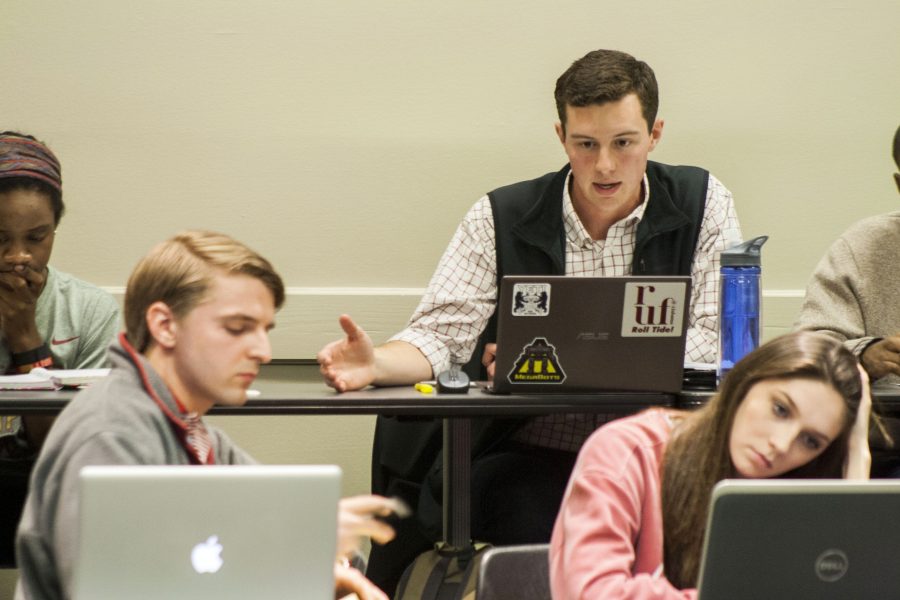The amendment was passed, and students will now be able to vote on the bill March 1 during the SGA election. Students will not be voting on whether or not to keep block seating, but whether or not to add this new amendment to the Constitution.
The amendment reads that the SOS be chosen on a 50/50 basis. Fifty percent will be on the organization’s GPA. Student organization leaders will submit a certain number of members’ GPAs and that will be multiplied by 1.5 to create the maximum number of seats they are eligible for.
An example given in the bill summary states, for instance, if an organization wishes to be eligible for 75 seats, it must submit 50 names and corresponding CWIDs. Those 50 names will be the GPAs used to calculate the organization GPA. Organizations can submit a maximum of 120 names, to be eligible for at most 180 seats.
“I think that this is a controversial issue that deserves a vote by the student body,” SGA President Elliot Spillers said. “They should be included in this process to ensure that it’s fair. The previous process was a little less than desired by many student organizations, and hopefully this process will ensure that it’s codified.”
Chief of Staff Chisolm Allenlundy said students will have to vote 50 plus one to add the amendment to the Constitution.
“If they vote no, block seating does not go away,” Allenlundy said. “It stays in the Code of Law, where it is fluid and will change year after year and becomes a political issue again.”
The other 50 percent will be based on a presentation from each organization seeking block seating. This will not only give organizations a chance to present themselves as a group instead of by grade, but also help smaller organizations whose GPA may be lower or scattered.
“Other schools across the SEC only do it by GPA, notably Auburn, whom we’ve contacted a lot during this process,” Spillers said. “It’s not fair for organizations who don’t rank GPA as a primary component for membership. Having the presentation portion allows organizations to present their educational experience, leadership and how diverse and inclusive they are as a whole.”
Allenlundy said the process is roughly the same as the last, but there are a few more components added.
“We did add the diversity element because [we] thought that was something the University was starting to take seriously,” Allenlundy said.









